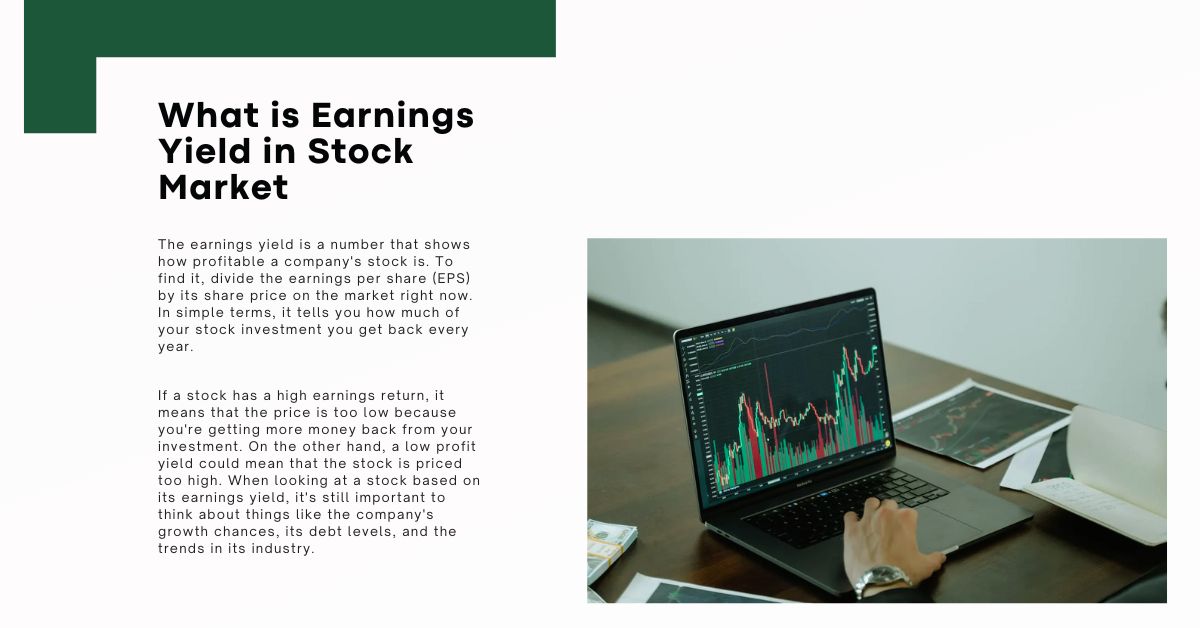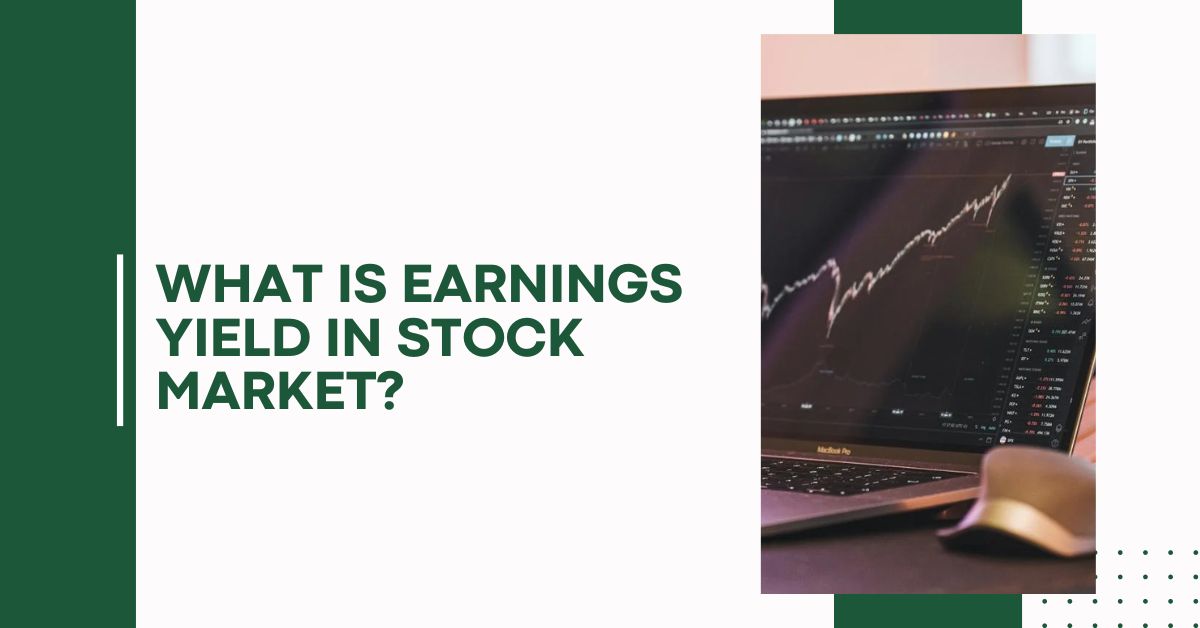Earnings yield is the amount of money made per share over a certain time frame divided by the price of a share at the moment. The P/E number is the other way around. This number tells buyers how much he has made per share. So let’s talk more about earnings yields in the stock market:
What is Earnings Yield in Stock Market?

The earnings yield is a number that shows how profitable a company’s stock is. To find it, divide the earnings per share (EPS) by its share price on the market right now. In simple terms, it tells you how much of your stock investment you get back every year.
If a stock has a high earnings return, it means that the price is too low because you’re getting more money back from your investment. On the other hand, a low profit yield could mean that the stock is priced too high. When looking at a stock based on its earnings yield, it’s still important to think about things like the company’s growth chances, its debt levels, and the trends in its industry.
Formula for Earnings Yield
Earnings Yield = Earnings Per Share (EPS) / Market Price Per Share
This formula shows the percentage of a company’s earnings per share that is returned to investors as income.
How Earnings Yield Works?
Earnings yield compares how much money a company makes to how much its stock is worth. If a business has a high earnings yield, it means that it is making a lot of money compared to its market value. This could mean that the stock is undervalued. Potential buyers might be interested in this chance.
A low profit yield, on the other hand, could mean that the stock is too expensive. This could mean that buyers are paying more than they should for the chance that the company will make money in the future. It’s important to remember, though, that a low earnings yield doesn’t always mean a stock is a bad buy. There are other things besides growth possibilities, industry trends, and company management that can change the value of a stock.
Pros and Cons of Earnings Yield
| Pros | Cons |
| Simple and easy to calculate: Requires only EPS and market price. | Doesn’t consider future growth: Focuses solely on past earnings. |
| Provides a quick valuation metric: Can be used to identify potentially undervalued stocks. | Can be misleading for companies with non-recurring earnings: These can distort the earnings yield. |
| Can be useful for comparing similar companies: Provides a standardized measure of profitability. | Doesn’t account for dividend payouts: Earnings yield doesn’t consider the income from dividends. |
| Can be used in conjunction with other valuation metrics: Provides a more comprehensive analysis. | May not be relevant for companies with negative earnings: The formula doesn’t work for companies with losses. |
Why is the Earnings Yield Useful for Investors?
Earnings yield is useful for buyers because it’s a simple and direct way to figure out how profitable a stock is compared to its price. Investors can find stocks that are likely cheap and could give them a good return on their money by comparing a company’s earnings to its market value.
When choosing an investment, earnings return is not the only thing you should think about, but it can be a good place to start. It is easier for buyers to choose which stocks to buy or sell when they know the earnings yield of a company.
Earnings Yield vs. P/E Ratio
| Feature | Earnings Yield | P/E Ratio |
| Definition | Measures the percentage of a company’s earnings returned to investors. | Measures the market price of a stock relative to its earnings per share. |
| Calculation | EPS / Market Price | Market Price / EPS |
| Interpretation | Higher is better (indicates undervaluation). | Lower is better (indicates undervaluation). |
| Relationship | Inversely related. A high earnings yield corresponds to a low P/E ratio and vice versa. | |
| Focus | Profitability relative to price. | Value relative to earnings. |
| Considerations | Doesn’t consider future growth or dividend payouts. | Doesn’t directly account for company-specific risks or industry trends. |
Read more about P\E Ratio in details:
Earnings Yield Vs. Dividend Yield
| Feature | Earnings Yield | Dividend Yield |
| Definition | Measures the percentage of a company’s earnings returned to investors. | Measures the percentage of a company’s stock price returned to investors as dividends. |
| Calculation | EPS / Market Price | Annual Dividend Per Share / Market Price |
| Focus | Overall profitability. | Income from dividends. |
| Relationship | Can be correlated, but not always. A high earnings yield doesn’t necessarily mean a high dividend yield, and vice versa. | |
| Considerations | Doesn’t consider dividend payouts. | Directly measures the income from dividends. |
| Usefulness | Useful for assessing overall profitability. | Useful for evaluating income-generating potential. |
Want to know more about Dividend Yield? You can read this by clicking this link:
What is a Good Earnings Yield?
What makes an earnings yield “good” depends on many things, such as the business, the size of the company, and the state of the market as a whole. A higher earnings yield usually means that a stock is undervalued because buyers are getting more money back from their investment.
But it’s also important to think about other things. One business that might not be a good investment is one whose earnings yield is high but whose profits have been going down in the past. Also, the average earnings yields for different businesses are not the same. Some people might not be as interested in a high earnings yield in an industry with low growth as they would be in an industry with high growth.
In the end, the best way to tell if an earnings yield is “good” is to compare it to the earnings yields of related companies and take other things into account, like the company’s health, growth prospects, and position in the market.

